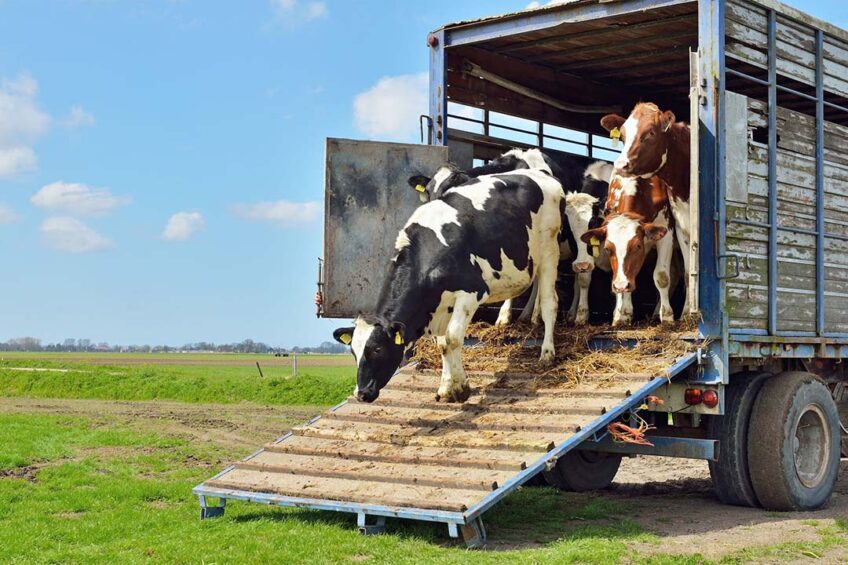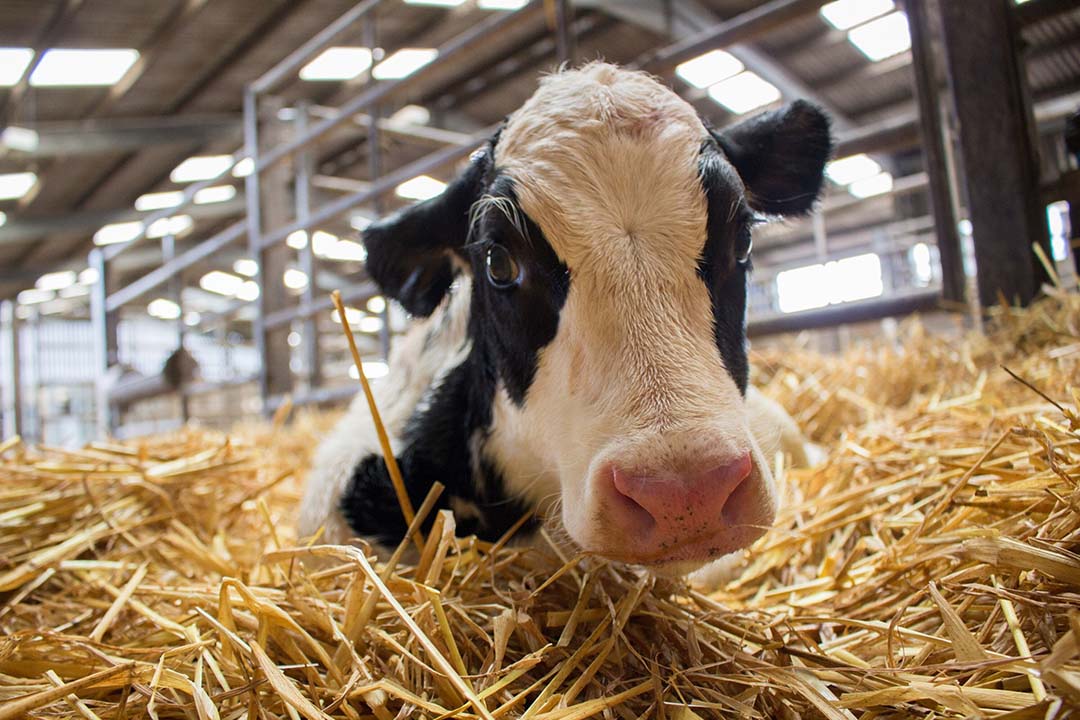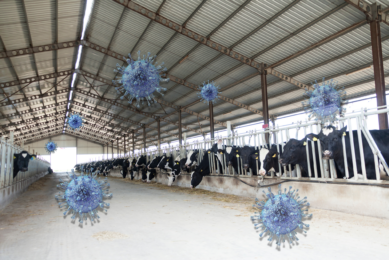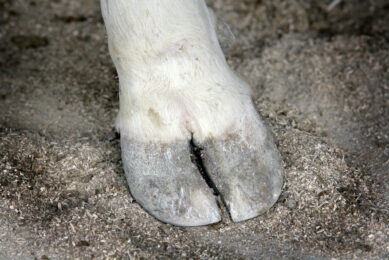Best biosecurity practices on dairy farms

Biosecurity practices reduce and/or prevent the introduction of new diseases from outside sources and reduce and/or prevent the movement of infectious diseases on the farm. Therefore, developing quality assurance programmes and best biosecurity practices improve farm profitability and increase production efficiency.
The 3 major biosecurity elements include isolation, traffic control, and sanitation. Isolation is an essential step in disease control that prevents contact between dairy cows including all new purchases as well as commingling between established groups of cattle within a controlled environment. Traffic control includes traffic onto the operation and traffic patterns within the operation which comprises people and all animals such as cows, dogs, cats, horses, wildlife, rodents, and birds. Traffic control within the operation minimises contamination of cattle, feed, feed handling equipment and equipment used on cattle. Sanitation addresses the disinfection of materials, people and equipment entering the operation and the cleanliness of the people and equipment on the operation.
Purchase of new cattle
It is necessary to know the health history of the herds from which cattle are purchased and the health status of individual animals brought into the operation. Limiting purchases to open heifers and virgin bulls would control the introduction of new diseases to the herd. Animals need to be transported in a clean vehicle. It is not recommended to buy animals without knowing their vaccination history or to buy from a herd that has mixed origin cattle. It is suggested that the buyer’s vet talks to the seller’s vet prior to buying animals. In addition, new arrivals need to be quarantined for 21-30 days before bringing them into contact with the rest of the cattle.
Calf management strategies
A strategic vaccination and parasite control plan needs to be in place for all calves and cows. Calving areas must be cleaned and disinfected and all cows must be tested clean of infectious diseases prior to calving. All colostrum fed to calves must come from cows that have been tested clean of infectious diseases. In addition, annual veterinary consultation about calf care is required. Waste milk should be pasteurised if fed to calves, and milk replacer mixing and handling equipment should be cleaned and sanitised after each feeding.
Feed biosecurity
Feed needs to be bought from suppliers with quality assurance and monitoring programmes such as testing procedures for mycotoxins and facility contamination control. Practices such as pelleting, steam flaking, and roasting decrease feed contamination. Feed storage areas and feed delivery equipment need to be cleaned out between batches of feed. High pressure washers with proper disinfectant can be used to clean feed bunks, storage areas, silos, mixing and delivery equipment, and feeding areas.
All feedstuffs must be examined closely for manure, mold, foreign materials, and uniformity. The access of dogs, cats, wildlife, birds, rodents, and other animals to feed and feed bunks needs to be prevented. Manure-handling equipment should not be used to handle feed.

Water biosecurity
To prevent contamination with toxins and infectious agents, birds and wildlife access to farm water sources must be restricted. In addition, filtration and chemical sterilisation of water, regular testing of water quality and potability, and microbiologic testing for coliform and other microorganisms are required. Watering cups, tanks and troughs should be designed and located for ease of cleaning and reducing contamination of feed and water. Water supplies should be protected from faecal contamination and waterers should be cleaned once a week.
Employee and visitor biosecurity
Providing on-farm laundry facilities for all protective clothing used on the farm, cleaning boots with disinfecting solution, and washing hands before and after working with sick or young animals reduces disease transmission by humans. Milking parlour personnel should wear latex gloves while milking to reduce the spread of mastitis. Furthermore, daily activities should be organised so that employees work with younger and more susceptible animals before working with older animals.
Regular biosecurity training is needed for all dairy farm personnel. Visitors must wear clean overalls with disposable clean booties during farm visits. Visitors access to cattle pens, feed mixing and storage areas, and treatment areas should be restricted.
Equipment and vehicle biosecurity
Equipment used on sick animals must be cleaned and disinfected before being used on healthy animals. However, clothing, shoes, and tools dedicated to sick animals should not be used for healthy animals. Furthermore, dehorners, ear taggers, hoof knives, clippers, and all shared and hired equipment must be cleaned and disinfected between uses. Vehicles that collect milk, and carcasses or deliver feedstuffs, pharmaceuticals, and semen should not have access to the zones where the animals are housed.
Both interior and exterior of the vehicles and trailers must be cleaned when entering the farm and disinfected before and after use. External vehicles should not be allowed on the farm. Dairy farms must have a designated area for visitors’ vehicles at the entrance of the farm and away from the animals and animal stalls.
Handling dead animals
Dead animals should be disposed of as quickly as possible to reduce the risk of pathogens spreading. In addition, rendering trucks are a particular risk to farm biosecurity because they are at high risk due to carrying animals killed by infectious diseases. Therefore, the dead animal removal area should be at a location that allows rendering trucks access without cross-contaminating healthy cattle.
Manure biosecurity
Manure should be treated as biological risk material and stored in an area not accessible to cattle due to its huge bacterial load. Recycling manure as a natural fertiliser should be done with caution to prevent contaminating crops, pastures, and groundwater sources. In addition, any manure from the hospital pen should not be used in the composting process and the temperature and microbial activity should be checked to confirm complete sterilisation. All manure spreaders and slurry handling equipment should only be brought to the farm after proper cleaning or disinfection.
Conclusion
On-farm biosecurity practices improve dairy cattle health, welfare, and productivity. However, widespread implementation of best biosecurity practices requires an understanding of the current practices of dairy producers. Further research is required to identify effective methods and critical control points to prevent the introduction and spread of infectious diseases on farms.










